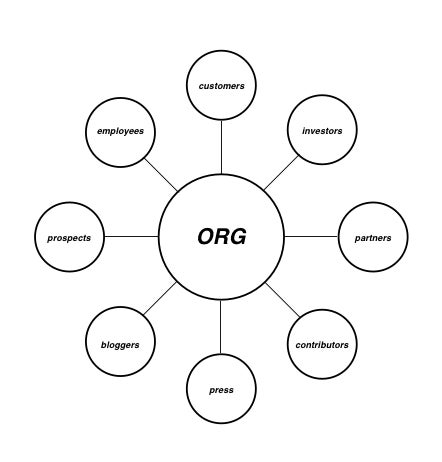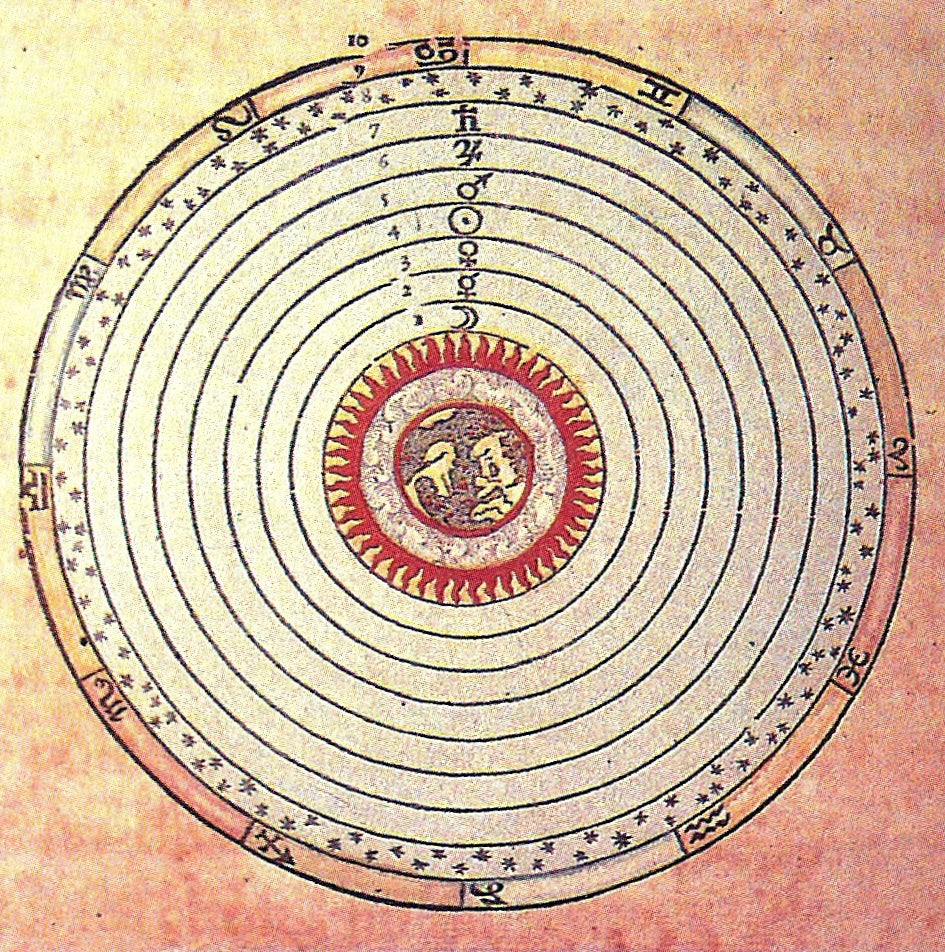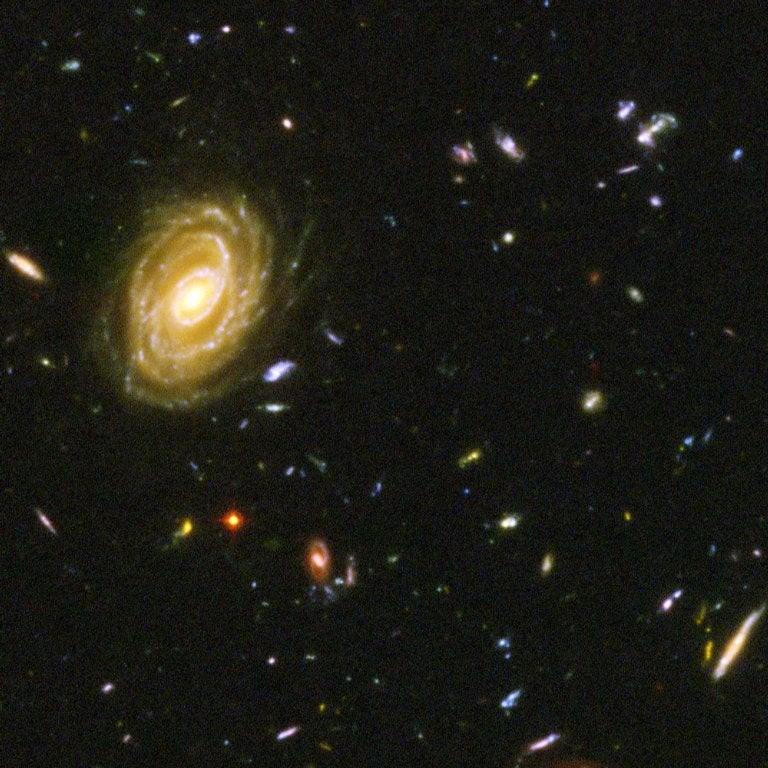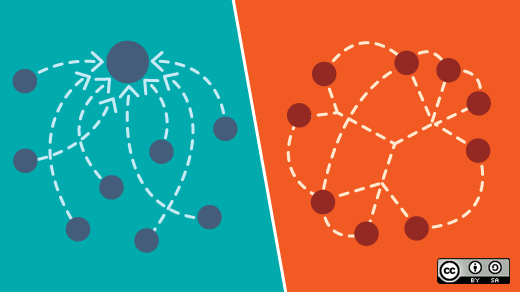Who is in your community? It seems like such a simple question.
In reality, your organization probably doesn’t just interact with one community, but a whole host of very different communities and sub-communities. The only thing these communities may share is that they are made up of individual human beings.
When asked to list the groups of people making up an organization’s community, most would probably end up with a list that looked something like this:
- customers
- investors
- donors
- contributors
- partners
- press
- employees
adding a few other groups that might vary depending on the type of work you do.
Most of the ideas listed will probably have one thing in common: they will be defined in the context of the organization. Customers of the organization. Investors in the organization. Partners of the organization. Press covering the organization.
Most people immediately think of communities by defining them with their organization in the center. Sort of like this:

But I bet most of the people in those communities don’t imagine your organization at the center of their universe. So why should you?
To break out of this sort of organization-centric thinking, try the following exercise. Ask yourself:
To which communities does our organization (or, really, the people behind it) belong?
What groups, affiliations, associations, or even loosely connected bands of like-minded people do our organization and the people behind it associate with? Consider things like industry associations, physical communities (like cities, states, or countries), universities or research institutions, political or lobbying groups, developer communities, civic organizations, governmental agencies, and whatever else you can imagine.
Now, rather than framing these organizations in your own context, try to imagine how your organization fits into their universe.
Remember Ptolemy? He was the guy who built a hypothetical model of the solar system with Earth at the center and the Sun and other planets orbiting us. Like this:

Sure, great organizations do create “gravity” that pulls new community members toward them. But they shouldn’t buy into the Ptolemaic point of view that they are at the center of the universe with everyone orbiting around them. Instead, organizations should imagine themselves as one gravitational force situated in a large context amongst many others. More like this:

In my view, one of the keys to building a powerful brand community in a connected world is accepting that your organization is not at the center of the universe.
I recommend approaching your community strategy from a different point of view. Consider:
- How can you become a productive member of the communities surrounding your organization?
- How can you not just create your own organizational gravity, but acknowledge and be “drawn in” by the gravitational force of others as well?
My view? Organizations that stop thinking like Ptolemy and instead picture themselves more humbly and selflessly in a larger context beyond their own needs will have much more luck being accepted by the savvy community members of the digital age.
What do you think?






3 Comments